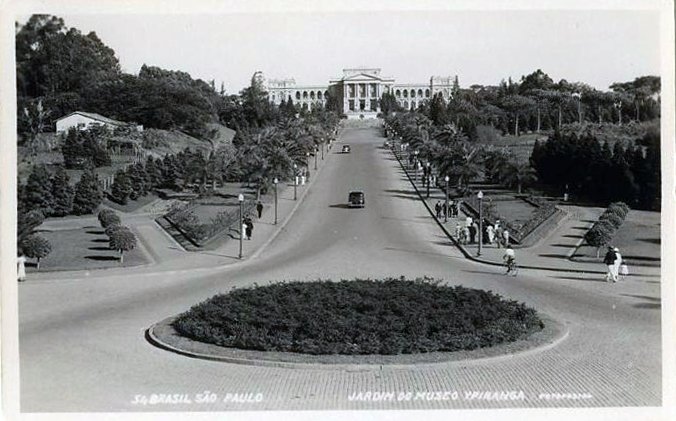
Monumento à Independência Visiting Hours, Tickets, and Historical Significance
Date: 18/07/2024
Introduction
Table of Contents
Historical Background and Significance
The Cry of Ipiranga and the Birth of a Nation
The Monumento à Independência stands as a powerful symbol of Brazilian independence. In the early 19th century, Brazil experienced growing unrest and a desire for self-governance. Dom Pedro I, son of the Portuguese King John VI, sympathized with the Brazilian cause. Upon receiving orders from Portugal demanding his return and the reinstatement of Brazil as a colony, Dom Pedro I made the momentous decision to defy his father and Portugal. Standing on the banks of the Ipiranga River, he raised his sword and declared “Independência ou Morte!” (“Independence or Death!”) on September 7, 1822, marking the birth of Brazil as an independent nation.
From Idea to Monument - A Timeline of Construction
The idea to erect a monument commemorating this pivotal event emerged shortly after Brazil’s independence. However, due to political and economic challenges, the project faced numerous delays.
- 1840s - The initial concept for the monument was proposed.
- 1884 - Emperor Pedro II, son of Dom Pedro I, laid the cornerstone for the monument.
- 1890 - Construction began in earnest, led by Italian architect Tommaso Gaudenzio Bezzi.
- 1922 - The monument was inaugurated on September 7, 1922, coinciding with the centennial celebration of Brazilian independence.
Architectural Grandeur and Symbolic Representations
The Monumento à Independência is an impressive example of eclectic architecture, blending elements of neoclassicism, baroque, and Art Nouveau styles. The monument’s design incorporates rich symbolism, with each element carefully chosen to represent aspects of Brazilian history and identity.
- The Equestrian Statue - The bronze equestrian statue of Dom Pedro I, created by Italian sculptor Ettore Ximenes, dominates the monument. The dynamic pose of Dom Pedro I raising his sword captures the decisive moment of the Cry of Ipiranga.
- The Base - The granite base of the monument features intricate carvings depicting scenes from Brazilian history, including the arrival of the Portuguese, the proclamation of independence, and the subsequent struggle for freedom.
- The Crypt - Located beneath the monument lies the Imperial Crypt, the final resting place of Dom Pedro I and his two wives, Empress Maria Leopoldina and Empress Amélie of Leuchtenberg.
A National Treasure and UNESCO World Heritage Site
Today, the Monumento à Independência stands as a revered national monument and a UNESCO World Heritage Site. It serves as a reminder of Brazil’s struggle for independence and the pivotal role played by Dom Pedro I in shaping the nation’s destiny. The monument attracts millions of visitors each year, both from Brazil and around the world, who come to pay homage to this significant historical landmark and to learn about Brazil’s rich past.
Visitor Information
Visiting Hours and Ticket Prices
The Monumento à Independência is open to the public from Tuesday to Sunday. The visiting hours are from 9:00 AM to 5:00 PM. Admission fees are as follows:
- Adults - R$10
- Students and Seniors - R$5
- Children under 6 - Free
Travel Tips and Accessibility
The monument is located in the Ipiranga district of São Paulo, easily accessible by public transportation and car. Parking is available on-site. The site is wheelchair accessible and offers guided tours in multiple languages.
Nearby Attractions
While visiting the Monumento à Independência, consider exploring other nearby attractions such as:
- Museu do Ipiranga - A museum dedicated to the history of Brazil.
- Parque da Independência - A beautiful park perfect for a leisurely stroll.
- Museu Paulista - Another historical museum located nearby.
Special Events and Photographic Spots
The monument hosts special events throughout the year, including reenactments of the Cry of Ipiranga and cultural festivals. For photography enthusiasts, the monument offers stunning backdrops, especially at sunrise and sunset.
FAQ
Q: Is there a guided tour available?
A: Yes, guided tours are available in multiple languages.
Q: Can I buy tickets online?
A: Yes, tickets can be purchased online through the official website.
Q: Are there any restaurants nearby?
A: Yes, there are several dining options within walking distance of the monument.



































































































































































